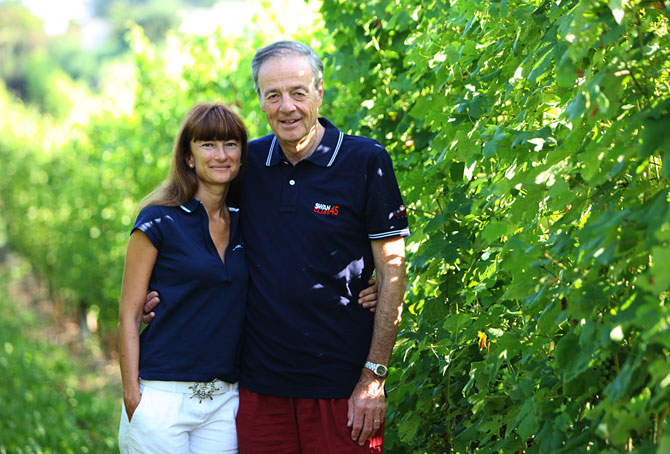Ca' Nova
VISIT THIS PRODUCER'S WEBSITE
A CREAM IMPORT SELECTION
Country of Origin: Italy
Location: Bogogno
People: Giada Codecasa, Owner | Gianluca Scaglione & Cristiano Garella, Winemakers
Viticulture: Practicing Organic
Items
| Ca' Nova 2020 'Bocciolo' Nebbiolo, Colline Novaresi DOC | Login | — | In Stock |
| Ca' Nova 2014 'Victor' Ghemme DOCG | Login | — | In Stock |
| Ca' Nova 2014 'Vigna San Quirico' Colline Novaresi DOC | Login | — | In Stock |
Azienda Agricola Cà Nova is located in Bogogno, the heart of Piedmont, at the foot of the spectacular Monte Rosa massif. Giada Codecasa, with her father Vittorio, founded Cà Nova in 1996 when they decided to breathe new life into their 17th-century farmhouse and restore the surrounding abandoned vineyards. Over a period of just a few years, they planted about ten hectares of vineyards on the gentle slopes of the Novara hills and set up their modern winery. Today the philosophy with which the Codecasa family produces their wines is based on great care and attention: care for their estate vineyards and attention to their winemaking.
The estate vineyards are located in three areas. The terroirs grow from the moraine of the glacier of Monte Rosa. Vigna del Golf is the vineyard surrounding the farmhouse. It was their first vineyard and covers about one hectare amidst the holes of the Bogogno Golf Course. Not far away, on a small, south-facing hill, is their Vigna San Quirico, which provides the grapes for the their prized Nebbiolo. This vineyard has a particular mineral soil due to the number of rocks and materials left from the moraine of the glacier. In the Ghemme DOCG the the Codecasa family planted six hectares of vineyards to Nebbiolo and Vespolina. The soil in Ghemme is alluvial mixed with clay. All the vines are Guyot trained. This allows for easier pruning to obtain lower yields per hectare and thus greater quality of the grapes. All vineyard treatments are environmentally friendly: no chemical weeding, fertilization with micro-organisms, and treatments for vine diseases only in emergency situations due to the very humid climate.
The wines are made with great attention to detail and care. After picking all the grapes by hand and loading the best, carefully-selected grapes into 20-kilo crates, they are taken to the processing area for destemming or pressing. The must is then pumped into the technologically-advanced fermentation tanks, where cold maceration, followed by alcoholic fermentation, with the addition of selected yeasts, takes place at controlled temperatures. These procedures allow for an increase in extraction of the berries. Then, the wine is racked into temperature-controlled stainless steel tanks for clarification and stabilization. The red wines are sent to the aging cellar where malolactic fermentation occurs in barrel. Young wines are generally bottled in the month of March following the harvest, while aged wines are bottled in the autumn a few years later. All of the wines are aged in the bottle for at least six months so as to reach full maturation and enhance the fullness of the bouquet.
In addition to the winery, the Codecasa family owns a small inn next to the winery. They added a solar greenhouse in 2011 as part of a sustainable project to produce clean energy and cultivate vegetables without chemical products.

